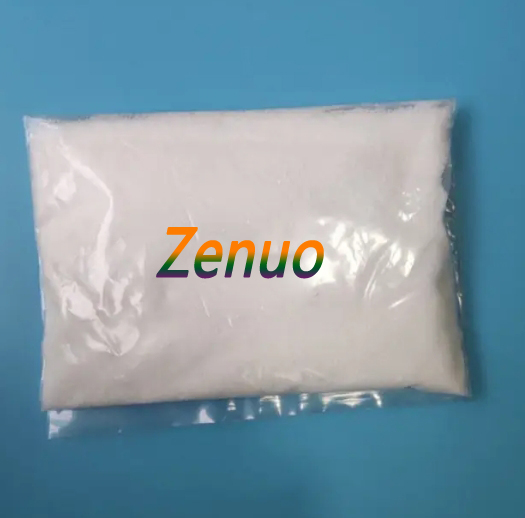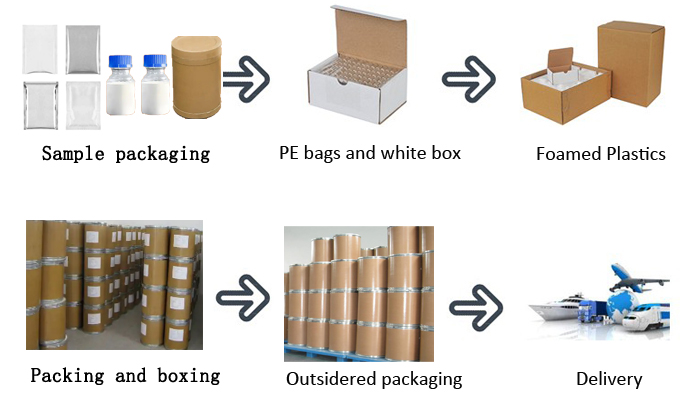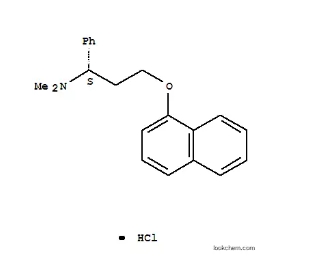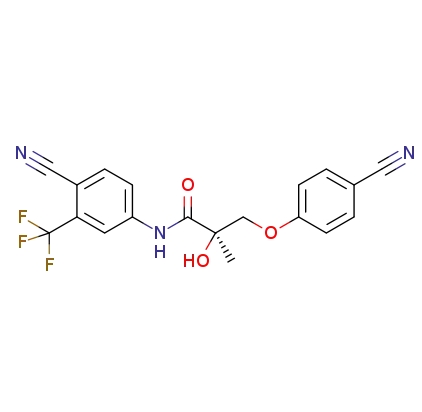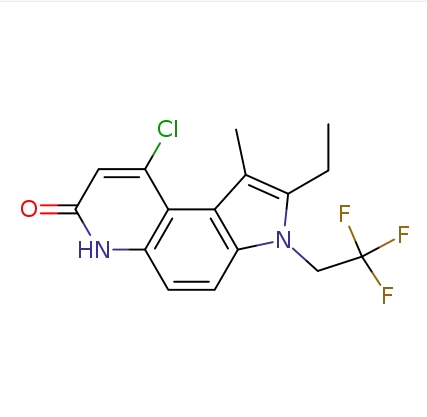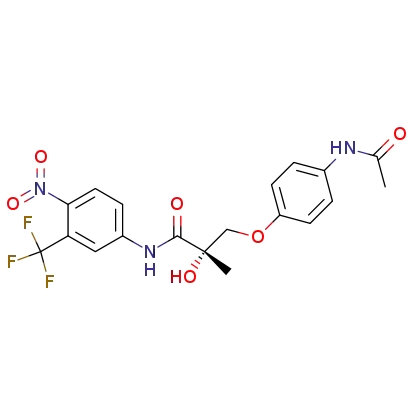CAS Number:51-28-5
Product Name:2,4-Dinitrophenol
IUPAC Name:2,4-dinitrophenol
Molecular Formula:
C6H4N2O5
C6H3(OH)(NO2)2
C6H4N2O5
Molecular Weight:184.11 g/mol
InChI
InChI=1S/C6H4N2O5/c9-6-2-1-4(7(10)11)3-5(6)8(12)13/h1-3,9H
InChI Key
UFBJCMHMOXMLKC-UHFFFAOYSA-N
SMILES
C1=CC(=C(C=C1[N+](=O)[O-])[N+](=O)[O-])O
Solubility
less than 1 mg/mL at 67.1° F (NTP, 1992)
2790 mg/L (at 20 °C)
Soluble in ethanol, ethyl ether, benzene, methanol
Solubility at 15 °C (g/100 g solution): ethyl acetate 15.55; acetone 35.90; chloroform 5.39; pyridine 20.08; carbon tetrachloride 0.423; toluene 6.36
Soluble in aqueous alkaline solutions
In water, 5,600 mg/L at 18 °C; 43,000 mg/L at 100 °C
In water, 2,790 mg/L at 20 °C
Solubility in water, g/l: 6 (poor)
>27.6 [ug/mL]
Synonyms
1,3-Dinitro-4-hydroxybenzene; 1-Hydroxy-2,4-dinitrobenzene; 2,4-DNP; 2,4-Dinitrophenol; Aldifen; DNP; Dinitrophenol; Dinofan; Fenoxyl Carbon N; NSC 1532; Nitrophen; Nitrophene; α-Dinitrophenol
Canonical SMILES
C1=CC(=C(C=C1[N+](=O)[O-])[N+](=O)[O-])O
Definition and Background
2,4-Dinitrophenol (DNP) is a yellow, crystalline compound that has been studied for over a century. Historically, DNP was first used as a herbicide and fungicide due to its potential toxicity to living organisms. However, it was later discovered that DNP can cause weight loss and increase metabolism. This led to its use as a weight loss supplement in the early 20th century. Despite its reported benefits, the use of DNP as a weight loss aid was banned by the FDA due to the serious health risks associated with its usage. Nonetheless, its immense potential as a scientific research tool has led to ongoing studies on its physical and chemical properties, synthesis and characterization, analytical methods, biological properties, toxicity and safety in scientific experiments, applications in scientific experiments, current state of research, potential implications in various fields of research and industry, limitations, and future directions.
Physical and Chemical Properties
DNP is an organic compound that has a chemical formula of C6H4N2O5. It is a solid, crystalline substance with a melting point of 108-112 °C and a boiling point of 306.2 °C. Its molecular weight is 184.113 g/mol, and its density is approximately 1.68 g/cm3. DNP is highly soluble in organic solvents such as acetone, ethanol, and ether, and somewhat soluble in water.
Synthesis and Characterization
The synthesis of DNP can be achieved through the nitration of phenol using a mixture of concentrated nitric and sulfuric acids. The crude product is then recrystallized to obtain the pure compound. Characterization of DNP is typically done through techniques such as Nuclear Magnetic Resonance (NMR) spectroscopy, Mass Spectrometry (MS), and Infrared (IR) spectroscopy, among others.
Analytical Methods
Various analytical methods have been used to detect and quantify DNP in different matrices such as urine, blood, and tissue samples. These methods include Gas Chromatography (GC) coupled with Mass Spectrometry (MS), High-Performance Liquid Chromatography (HPLC), and Thin-Layer Chromatography (TLC), among others.
Biological Properties
Studies have shown that DNP can increase metabolic rate, leading to weight loss and improved physical performance in humans and animals. DNP achieves this by disrupting the cellular process of oxidative phosphorylation in mitochondria, which generates energy in cells. This leads to the inefficient production of adenosine triphosphate (ATP), causing the body to use stored fat for energy instead. DNP has also been reported to have antimicrobial properties against various bacteria, fungi, and viruses.
Toxicity and Safety in Scientific Experiments
The use of DNP in scientific experiments requires strict adherence to safety protocols due to its high toxicity. DNP is classified as a hazardous substance due to its potential to cause severe acute and chronic toxic effects. Ingesting doses of DNP above 20 mg/kg of body weight can lead to increased body temperature, sweating, tachycardia, nausea, headache, and even death in severe cases.
Applications in Scientific Experiments
DNP has been used in various scientific experiments due to its potential to disrupt the electron transport chain and induce changes in cellular metabolism. Studies have shown that DNP can be used as a research tool to study mitochondrial bioenergetics, aging, and inflammation, among other areas. Additionally, DNP has been used to investigate the roles of reactive oxygen species (ROS) in various cellular processes.
Current State of Research
Current research on DNP is focused on understanding the mechanisms underlying its biological effects, developing safer analogs, and exploring its potential therapeutic applications. Additionally, researchers are investigating the applicability of DNP in sports doping and the development of new herbicides and pesticides.
Potential Implications in Various Fields of Research and Industry
The potential applications of DNP range from medicine to agriculture and sports doping. In medicine, DNP could be used to treat metabolic disorders such as diabetes and obesity. In agriculture, DNP has the potential to be developed as an environmentally friendly pesticide and herbicide. In sports, DNP could be used as a performance enhancing drug.
Limitations and Future Directions
The use of DNP in scientific research is still limited due to its high toxicity and potential health risks. Researchers are developing safer analogs and exploring alternative compounds that can achieve similar effects. Moreover, future research should focus on identifying the optimal dose, duration, and administration of DNP to maximize its therapeutic potential while minimizing its side effects.
Future directions
include:
1. Developing safer and more effective analogs of DNP for medical and agricultural applications.
2. Investigating the effects of DNP on mitochondrial enzymes and other cellular processes.
3. Studying the effects of DNP in different animal models to better understand its toxicity and potential therapeutic applications.
4. Evaluating the potential use of DNP as a biomarker for environmental pollution.
5. Examining the mechanisms underlying DNP-induced weight loss and its potential use in treating obesity and related metabolic disorders.
6. Investigating the potential use of DNP in sports doping and developing detection methods to prevent its misuse.
In conclusion, 2,4-Dinitrophenol is a complex compound that has been researched for many years due to its potential applications in various fields of research and industry. Its physical and chemical properties, synthesis and characterization, analytical methods, biological properties, toxicity and safety in scientific experiments, applications in scientific experiments, current state of research, potential implications in various fields of research and industry, limitations, and future directions have been comprehensively explored. Further research is essential to uncover the full scope of DNP’s therapeutic potential and to develop safer and more effective compounds.
Specification
Physical Description
2,4-dinitrophenol appears as solid yellow crystals. Explosive when dry or with less than 15% water. The primary hazard is from blast of an instantaneous explosion and not flying projectiles and fragments. slightly soluble in water and soluble in ether and solutions of sodium or potassium hydroxide.
CRYSTALS WITH CHARACTERISTIC ODOUR.
Color/Form
Pale yellow platelets or leaflets from water
Yellowish to yellow orthorhombic crystals
XLogP3
1.7
Boiling Point
Sublimes (when carefully heated) (NTP, 1992)
Sublimes
Vapor Density
6.35 (NTP, 1992) (Relative to Air)
6.35 (Air = 1)
Relative vapor density (air = 1): 6.36
Density
1.68 at 68 °F (USCG, 1999)
1.683 g/cu cm at 24 °C
Relative density (water = 1): 1.68
LogP
1.67
1.67 (LogP)
log Kow = 1.67
1.67 (estimated)
Odor
SWEET, MUSTY ODOR
Others
Melting Point
234 to 237 °F (NTP, 1992)
115.5 °C
114.8 °C
112 °C
UNII
Q13SKS21MN
GHS Hazard Statements
H301: Toxic if swallowed [Danger Acute toxicity, oral];
H311: Toxic in contact with skin [Danger Acute toxicity, dermal];
H331: Toxic if inhaled [Danger Acute toxicity, inhalation];
H373 **: Causes damage to organs through prolonged or repeated exposure [Warning Specific target organ toxicity, repeated exposure];
H400: Very toxic to aquatic life [Warning Hazardous to the aquatic environment, acute hazard]
Therapeutic Uses
Former use: Early in the 1930’s 2,4-dinitrophenol was highly recommended for the treatment of obesity. During the first 15 months following the introduction of the use, an estimated 100,000 persons took the drug for weight reduction … . Typical treatment regimen for weight control consisted of one capsule containing 75 mg of 2,4-dinitrophenol or 100 mg of the sodium salt taken 3 times daily after meals (2 to 5 mg/kg/day).
 Zenuo Biotech
Zenuo Biotech 


